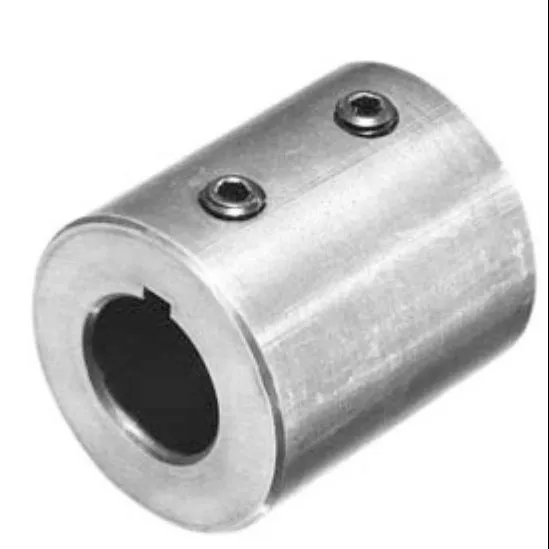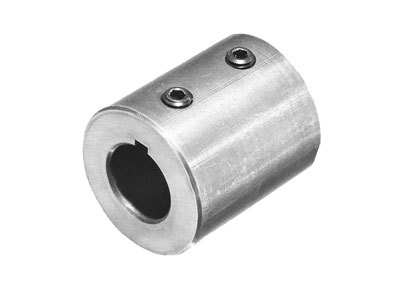Product Description
Z9 Power Lock Keyless Shaft Sleeve ZJ9 Connecting Sleeve Power Lock Coupling For Mine
Description:
*More competitive prices.
*Shorter delivery date,25 working days.
*Strict QC management. ISO 9001:2008.
*Produce standard and non-standard.
Locking device is used to 2 shafts (master and slave) rotate together to transmit torque through the screws,has kinds of models, material is steel,no surface treatment.
Simple installation, long service life and high strength. When overloaded, the connection will be lost, which can protect the equipment from damage, easy to disassemble, and has good interchangeability.
International standard clamp power locks, keyless locking device, Adjustable Locking Device, Safe Locking Device, Precesion High Power Transmission Power Lock, Keyless shaft Locking Device, joint shaft axle wheel, auto universal joint, cross joint.
Product paramters:
Application:
1. Engineering : Machine Tools, Foundry Equipments, Conveyors, Compressors, Painting systems etc.
2. Pharmaceuticals & Food Processing : Pulp Mill Blowers, Conveyor in warehouse, Agitators, Grain, Boiler, Bakery Machine,
Labeling Machine, Robots etc.
3. Agriculture Industries : Cultivator, Rice Winnower Tractor, Harvester, Harvester, Rice Planter etc
4. Textile Mills : Looms, Spinning, Wrappers, High-speed auto looms, Processing machine, Twister, Carding machine. Ruler calendar
machine high speed winder etc.
5. Printing Machinery : News paper press, Rotary machine, Screen Printer Machine, Linotype machine offset printer etc.
6. Paper Industries : Chipper roll grinder, Cut off saw, Edgers, Flotation cell and chips saws etc.
7. Building Construction Machinery : Buffers, Elevator Floor polisher mixing machine, vibrator, Hoists, Crusher etc.
8.Office Equipments : Typewriter, Plotters, Camera, Money drive, Money Sorting machine, Data storage equipment etc.
9.Glass and plastic Industries : Conveyor, Carton Sealers, Grinders, Creeper paper manufacturing machine, Lintec backing etc.
10.Home Appliances : Vacuum cleaner, Laundry machine, iceream machine, Sewing Machine, Kitchen equipments etc.
Packing & Delivery:
FAQ:
Q 1: Are you a trading company or a manufacturer?
A: We are a professional manufacturer specializing in manufacturing
various series of couplings.
Q 2:Can you do OEM?
Yes, we can. We can do OEM & ODM for all the customers with customized artworks in PDF or AI format.
Q 3:How long is your delivery time?
Generally, it is 20-30 days if the goods are not in stock. It is according to quantity.
Q 4: How long is your warranty?
A: Our Warranty is 12 months under normal circumstances.
Q 5: Do you have inspection procedures for coupling?
A:100% self-inspection before packing.
Q 6: Can I have a visit to your factory before the order?
A: Sure, welcome to visit our factory. /* January 22, 2571 19:08:37 */!function(){function s(e,r){var a,o={};try{e&&e.split(“,”).forEach(function(e,t){e&&(a=e.match(/(.*?):(.*)$/))&&1

What Materials are Commonly Used in Manufacturing Sleeve Couplings?
Sleeve couplings are manufactured using a variety of materials to suit different application requirements. The choice of material depends on factors such as the specific application, operating conditions, torque requirements, and environmental considerations. Here are some common materials used in manufacturing sleeve couplings:
1. Steel:
Steel is one of the most common materials used in manufacturing sleeve couplings. It offers excellent strength, durability, and resistance to wear and corrosion. Steel sleeve couplings are suitable for a wide range of applications, including industrial machinery, power transmission systems, and automotive applications.
2. Stainless Steel:
Stainless steel sleeve couplings provide enhanced corrosion resistance compared to standard steel couplings. They are ideal for applications where exposure to moisture, chemicals, or corrosive environments is a concern. Stainless steel couplings are commonly used in food processing, pharmaceutical, and marine applications.
3. Aluminum:
Aluminum sleeve couplings are lightweight and offer good corrosion resistance. They are commonly used in applications where reduced inertia is desirable, such as robotics, aerospace, and automation. However, aluminum couplings have lower torque capacities compared to steel or stainless steel couplings.
4. Brass or Bronze:
Brass or bronze sleeve couplings are known for their excellent corrosion resistance, making them suitable for marine and saltwater applications. They are also used in certain industries where electrical conductivity is required, such as electrical equipment and machinery.
5. Thermoplastics:
Thermoplastic materials, such as nylon or polyurethane, are used in some sleeve couplings. These materials offer good chemical resistance and are often used in light-duty or precision applications, such as medical devices and laboratory equipment.
6. Composite Materials:
Composite materials, which combine different materials for specific performance characteristics, are also used in some sleeve couplings. These materials can provide a balance of properties, such as lightweight, strength, and corrosion resistance, making them suitable for various applications.
The choice of material for a sleeve coupling depends on the specific requirements of the application. Factors such as torque capacity, environmental conditions, temperature range, and the need for corrosion resistance play a vital role in selecting the appropriate material. Manufacturers often provide detailed specifications and material options for their sleeve coupling products, allowing engineers and designers to make informed decisions based on the application’s demands.

How do Sleeve Couplings Compare to Other Coupling Types, such as Flexible or Rigid Couplings?
Sleeve couplings, flexible couplings, and rigid couplings are three common types of couplings used in mechanical power transmission. Each type has its unique characteristics and applications. Here’s a comparison of sleeve couplings with flexible and rigid couplings:
- Sleeve Couplings: Sleeve couplings are simple and cost-effective couplings that join two shafts end-to-end. They provide some flexibility to accommodate slight shaft misalignments and are suitable for low to moderate torque applications. They are easy to install and do not require extensive maintenance. However, they have limited misalignment compensation and cannot handle significant shaft offsets.
- Flexible Couplings: Flexible couplings are designed to handle greater misalignments compared to sleeve couplings. They can accommodate angular, parallel, and axial misalignments, providing higher flexibility. Flexible couplings dampen vibrations and reduce shock transmission, contributing to smoother operation. They are available in various designs such as elastomeric, beam, and disc couplings, each offering specific benefits. Flexible couplings are ideal for applications where misalignments, vibrations, or shock loads are significant.
- Rigid Couplings: Rigid couplings are designed to connect shafts in a straight and rigid manner, without any flexibility. They provide accurate shaft alignment, making them suitable for precision applications. Rigid couplings are robust and transmit torque with high efficiency. However, they cannot accommodate misalignments and are susceptible to vibrations and shocks. Rigid couplings are commonly used in applications where precise shaft alignment is critical.
Choosing the appropriate coupling type depends on the specific requirements of the application:
- Alignment Requirements: If the application demands accurate shaft alignment and no misalignment compensation is needed, rigid couplings are suitable. For moderate misalignments, sleeve couplings may be sufficient, while flexible couplings are preferred for significant misalignments.
- Vibration and Shock Damping: If vibration and shock absorption are essential, flexible couplings are preferred due to their ability to dampen vibrations. Sleeve couplings have limited vibration damping capabilities, while rigid couplings do not dampen vibrations.
- Torque and Load: For low to moderate torque and loads, sleeve couplings are cost-effective choices. For higher torque applications with misalignment compensation, flexible couplings are preferred. Rigid couplings are suitable for high torque and precise alignment applications.
In summary, sleeve couplings provide a basic connection between shafts with limited misalignment compensation. Flexible couplings offer higher misalignment accommodation and vibration damping, making them versatile for various applications. Rigid couplings excel in precise shaft alignment requirements but lack flexibility and shock absorption.

What is a Sleeve Coupling, and How is it Used in Mechanical Power Transmission?
A sleeve coupling is a type of flexible coupling used in mechanical power transmission to connect two shafts and transmit torque between them. It consists of a hollow cylindrical sleeve with an inner diameter that matches the shafts’ outer diameters. The sleeve coupling is placed over the ends of the shafts, and its flexibility allows for some misalignment between the shafts while transmitting rotational power from one shaft to the other.
The sleeve coupling is a simple and cost-effective coupling solution commonly used in various industrial applications. Its design allows for easy installation and maintenance, making it suitable for applications where frequent shaft disconnection and reconnection are required.
Here’s how a sleeve coupling works in mechanical power transmission:
- Shaft Connection:
The sleeve coupling connects two shafts that need to be linked together to transmit power.
- Flexible Design:
The flexibility of the sleeve coupling allows for some angular and axial misalignment between the shafts. This flexibility is achieved due to the clearance between the inner diameter of the sleeve and the outer diameter of the shafts.
- Torque Transmission:
When one shaft rotates, it transfers torque to the sleeve coupling. The flexible nature of the coupling allows it to compensate for minor misalignments and still transmit torque smoothly to the other shaft.
- Reduced Vibration and Shock Absorption:
The flexibility of the sleeve coupling also helps dampen vibrations and absorb shocks, preventing them from transferring between the connected shafts. This feature contributes to the smooth and efficient operation of the connected machinery.
- Limitations:
Sleeve couplings have their limitations, including lower torsional stiffness compared to other coupling types, which may limit their use in precision applications with high torque and speed requirements. Additionally, sleeve couplings are not suitable for applications with significant misalignments or when precise angular alignment is crucial.
In summary, a sleeve coupling is a flexible and straightforward coupling used in mechanical power transmission to connect two shafts while allowing for some misalignment. Its simple design and ability to absorb shocks and dampen vibrations make it a popular choice for various industrial applications where precision alignment is not critical.


editor by CX 2024-04-09
